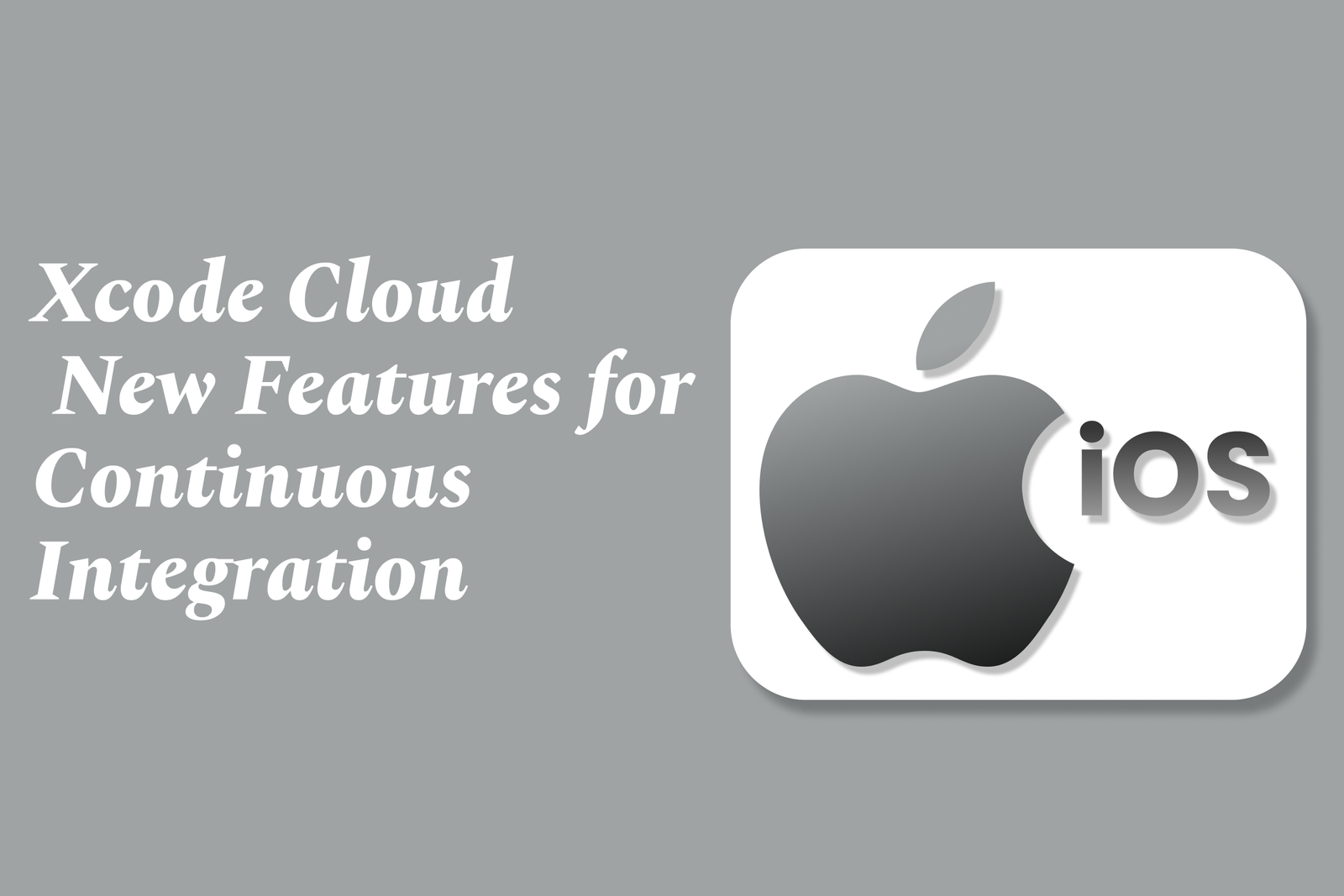Xcode Cloud: New Features for Continuous Integration
Xcode Cloud is Apple’s integrated CI/CD service within Xcode, offering automated workflows, parallel testing across Apple devices, and seamless app deployment. It streamlines building, testing, and delivery, enhancing efficiency for Apple developers in continuous integration.
Xcode Cloud: New Features for Continuous Integration
1 ) Introduction to Xcode Cloud
Apple introduced Xcode Cloud as a continuous integration and delivery (CI/CD) service integrated directly within Xcode. Designed specifically for Apple developers, it accelerates app development by uniting cloud based tools for building, running automated parallel tests, delivering apps to testers, and managing user feedback.
2 ) Key Features of Xcode Cloud
Automated Workflows: Users can configure workflows tailored to their development process or start with built in workflows that alert teams instantly if code changes introduce issues.
Parallel Testing: Enables testing on multiple device types simultaneously, speeding up the testing process while developers continue coding locally.
Integration with Xcode: Build and test results, plus user crash feedback, appear directly within Xcode, with live build status indicators and filtering capabilities.
App Store Connect Integration: The web dashboard provides critical build and test data, workflow editing, and direct build launches.
3 ) Comparison and Innovation
Unlike third party CI/CD tools, Xcode Cloud offers an exceptional user experience by deeply integrating with the Xcode IDE. It supports automated building, device specific testing across all Apple platforms (Mac, iPhone, iPad, Watch, TV), and seamless deployment via TestFlight, eliminating the need for developers to manage device farms or simulators manually.
4 ) Team Collaboration Features
Xcode Cloud supports team workflows by allowing pull requests, code reviews, and merge management integrated within Xcode, provided the Git repository is hosted on platforms like GitHub or Bitbucket.
5 ) Limitations and Requirements
Apple Platform Only: Supports only projects built with Xcode targeting Apple platforms; no cross platform or Android support.
Latest Software Needed: Requires Xcode 13+ and latest macOS versions while allowing legacy OS testing.
Developer Centric: Lacks advanced enterprise CI/CD integrations like configuration as code, making developer or small team management central.
Security and Control: While secure, enterprises do not have granular control over build environments or resource usage as in dedicated solutions.
6 ) Getting Started with Xcode Cloud
Enrollment in the Apple Developer Program, using an Apple ID in Xcode, and having an App Store Connect app record are pre requisites. Projects must use shared schemes within Xcode projects or workspaces to enable CI/CD pipelines.
7 ) Integration with Other Tools (Example Workflow)
A practical workflow example integrates Linear for project management, GitHub for version control, and Xcode Cloud for CI. Branch naming conventions in Linear link issues to GitHub branches, and Xcode Cloud’s workflows are connected seamlessly for automated builds and testing, supporting small teams and scaling for future growth.
8 ) Conclusion
Xcode Cloud represents a significant advancement in Apple platform app development by embedding CI/CD directly into the familiar Xcode environment and streamlining build, test, and distribution processes. While it currently suits small to medium teams best, ongoing updates will likely expand capabilities and integrations.
https://justacademy.in/news-detail/flutter-linux-desktop-support-progress
https://justacademy.in/news-detail/android-developer-preview-releases
https://justacademy.in/news-detail/the-rise-of-react-native-in-iot-applications
https://justacademy.in/news-detail/devtools-updates-flutter-devs-should-know
https://justacademy.in/news-detail/android-15-beta-released:-key-features-to-know
Related Posts
In 2025, top Angular libraries offer modern, feature-rich components and tools for building dynamic web apps. From powerful data grids to low-code platforms like UI Bakery, these libraries enhance development speed, UI design, and scalability, making them essential for Angular developers.
Migrating from AngularJS to Angular 17 involves gradually upgrading your app by running both frameworks together using tools like ngUpgrade, rewriting components in TypeScript, and adopting Angular’s modern architecture to enhance performance, maintainability, and long-term support.
Angular state management tools help organize and handle app data efficiently, improving scalability and maintainability. Popular options include NgRx for robust, RxJS-based patterns, and newer Signal Store solutions that offer simpler, reactive approaches integrated tightly with Angular’s latest features.
RxJS in Angular empowers developers to manage asynchronous data streams with powerful operators like `forkJoin`, `combineLatest`, and `zip`. Mastering these key operators in 2025 is essential for building efficient, reactive applications that handle complex event sequences seamlessly.
Angular performance optimization in 2025 focuses on improving app speed and responsiveness by using techniques like OnPush change detection, lazy loading, efficient data caching, and AOT compilation. These practices reduce load times, enhance user experience, and ensure scalable, fast Angular applications.
In 2025, Angular remains preferred for large-scale, enterprise apps with its robust, all-in-one framework, while Vue attracts developers seeking simplicity and fast development for smaller projects. Both frameworks excel, with choice driven by project needs and team expertise.
Angular Signals are a new reactive primitive in Angular 16 that enable fine-grained, efficient change detection by automatically tracking dependencies and updating only affected parts of the UI. They simplify state management and boost app performance, revolutionizing Angular's reactivity model.
Angular interview questions to prepare in 2025 focus on core concepts like components, directives, data binding, routing, and dependency injection, along with TypeScript mastery and latest Angular features to ensure strong practical knowledge for building scalable, efficient web applications.
AngularJS reached its official end of support in January 2022, meaning no further updates or security patches. To ensure app security and performance, developers should consider migrating to modern Angular versions or seek third-party long-term support options if immediate migration isn’t possible.
The Angular Roadmap 2025 highlights upcoming features focused on improving developer experience and performance, including zoneless Angular, Signals integration, enhanced Forms, async data handling, improved HMR, and expanded Angular Material/CDK enhancements, driving modern, efficient web app development.










